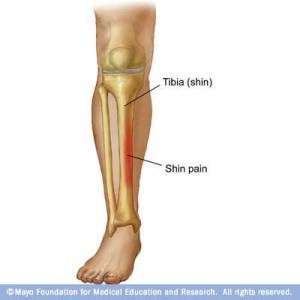Pain in the shins is not a form of a muscle pull. This is a sign of shin splints.
Shin splints occur when you overuse your lower legs. This condition is a result of inflammation of the large bone in the lower leg, known as the tibia, along with the muscles, tendons and the thin tissue layer covering the bone. Shin splints cause pain in the lower legs, and the discomfort may last even after you stop exercising.
The condition is most commonly seen in athletes whose legs pound a hard surface repeatedly; runners, ballet dancers, hikers, ballet dancers, and basketball players are all prone to shin splints, especially if an athlete increases mileage or activity too quickly. Having low foot arches, or flat feet, can also increase the risk of shin splints, since it can put increased stress on the lower legs.
Oftentimes, a few weeks away from weight-bearing exercise is enough to allow shin splints to clear up. In fact, it’s rare that surgery is necessary to treat shin splints. Still, it’s important to rule out other, potentially more serious conditions, so you should consult a clinician about your pain. He or she may examine your legs, and an X-ray or bone scan may be necessary to make sure that your lower leg pain is not being caused by a stress fracture. The sports medicine specialist may also suggest you undergo physical therapy. Learn more about additional shin splints treatment options.
It’s important that once you begin training again, you start slowly, increasing your mileage bit by bit, to avoid a recurrence of shin splints. Furthermore, stretch and warm up properly before each session.

